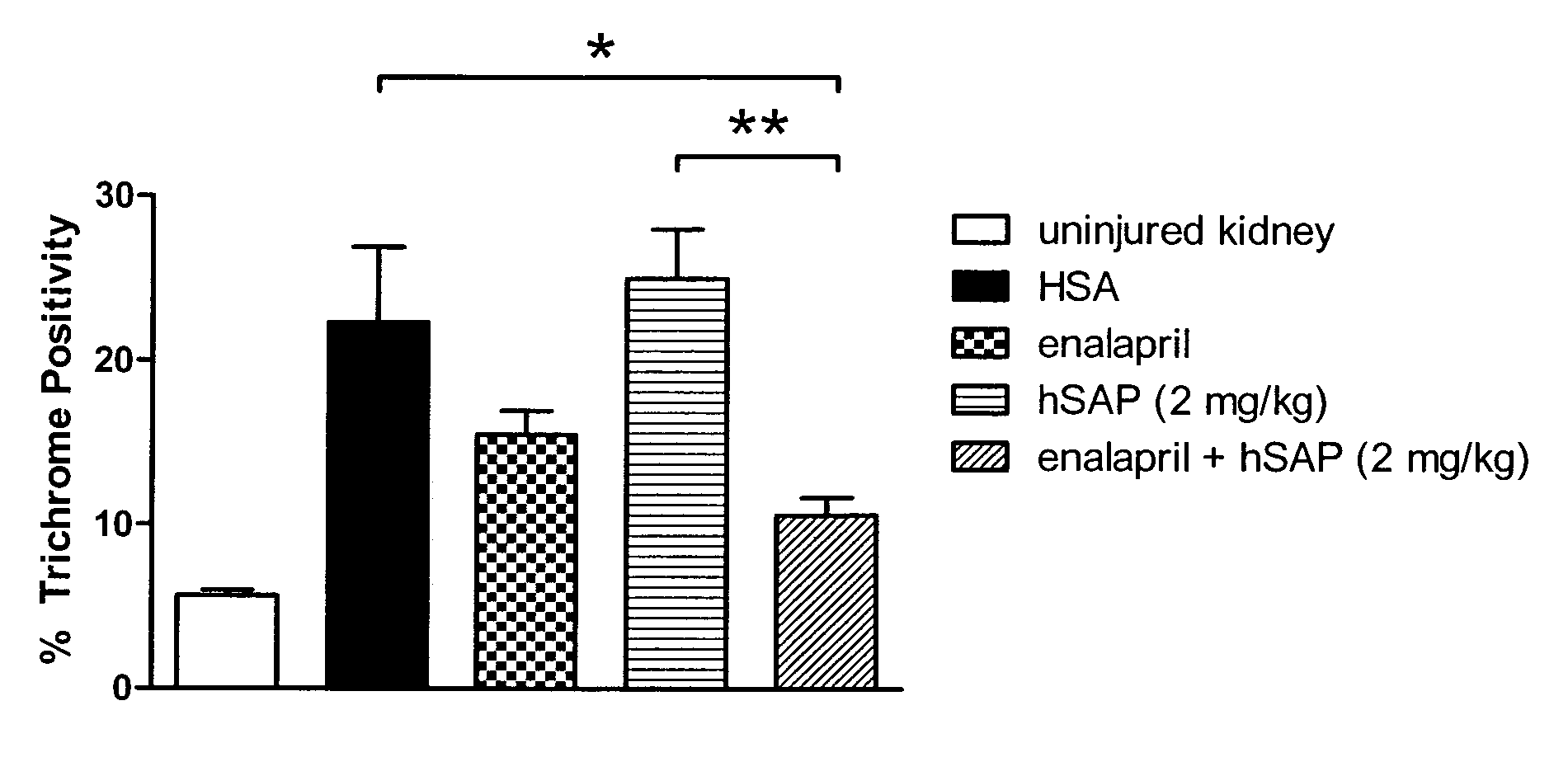Conjoint therapy for treating fibrotic diseases
a joint therapy and fibrotic technology, applied in immunological disorders, metabolism disorders, antibody medical ingredients, etc., can solve the problems of extensive tissue remodeling, permanent scar tissue formation, and repair process can become pathogenic, and achieve the effect of reducing symptoms
- Summary
- Abstract
- Description
- Claims
- Application Information
AI Technical Summary
Benefits of technology
Problems solved by technology
Method used
Image
Examples
Embodiment Construction
I. Overview
[0016]The regulation of events leading to fibrosis involves at least two major events. One is the proliferation and differentiation of fibrocytes. Fibrocytes are a distinct population of fibroblast-like cells derived from peripheral blood monocytes that normally enter sites of tissue injury to promote angiogenesis and wound healing. Fibrocytes differentiate from CD14+ peripheral blood monocytes, and may differentiate from other PBMC cells. The presence of SAP, IL-12, Laminin-1, anti-FcγR antibodies, crosslinked IgG and / or aggregated IgG may inhibit or at least partially delay this process.
[0017]The second major event is the formation and maintenance of fibrotic tissue. Fibrotic tissue may be formed and maintained by the recruitment and proliferation of fibroblast cells, the formation of new extracellular matrix, and the growth of new vascular tissue. In pathologic fibrosis, such as following chronic inflammation, injury, or idiopathic fibrosis, it is this excess fibrotic ...
PUM
| Property | Measurement | Unit |
|---|---|---|
| concentration | aaaaa | aaaaa |
| concentration | aaaaa | aaaaa |
| concentration | aaaaa | aaaaa |
Abstract
Description
Claims
Application Information
 Login to View More
Login to View More - R&D
- Intellectual Property
- Life Sciences
- Materials
- Tech Scout
- Unparalleled Data Quality
- Higher Quality Content
- 60% Fewer Hallucinations
Browse by: Latest US Patents, China's latest patents, Technical Efficacy Thesaurus, Application Domain, Technology Topic, Popular Technical Reports.
© 2025 PatSnap. All rights reserved.Legal|Privacy policy|Modern Slavery Act Transparency Statement|Sitemap|About US| Contact US: help@patsnap.com

